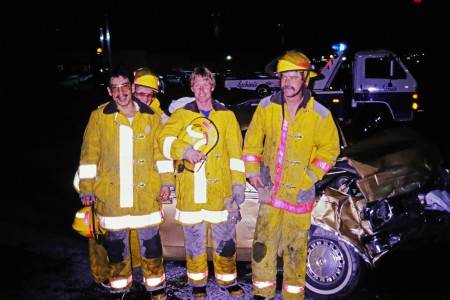BRADYCARDIA
ALL LEVELS
DESIGNATION OF CONDITION
The patient will present with heart rate of <60 bpm and be symptomatic / unstable.
EMPHASIS ON PATIENT CARE
Maintain adequate oxygenation and perfusion. Consider the underlying causes of bradycardia (e.g., hypoxia, hypoglycemia, toxicology and hypothermia).
1. Primary Management - Assess ABC’s and manage as indicated.
2. Cardiac monitoring, oxygen administration, and obtain 12 - lead ECG, if possible.
3. Call for ALS intercept if serious signs or symptoms (hypotension, acutely altered mental status, signs of shock, ischemic chest discomfort, or acute heart failure).
4. Transport the patient as soon as possible to the nearest medical facility.
5. Secondary Management - History, physical exam, vital signs
a. If suspected AMI, administer ASPIRIN [325 mg PO]. Chewed then swallowed.
AEMT
1. In-route, initiate an IV/IO Line of isotonic solution at a flow rate determined by patient condition.
PARAMEDIC
1. If serious signs or symptoms of hemodynamically instability (hypotension, acutely AMS, signs of shock, ischemic chest discomfort, or acute heart failure)
a. Consider cardiac pacing first.
i. May require sedation with MIDAZOLAM 2-4 mg IV/IO/IN/IM
b. ATROPINE 1.0 mg IV/IO to maximum of 3.0 mg. May be given simultaneously with pacing.
c. ATROPINE will not be effective in patients who have had heart transplants.
2. Repeat set of vitals, if no change, administer a Vasopressor:
a. EPINEPHRINE drip (1 mg in 250 ml of NS = 4 mcg/ml) and start at 2 mcg/min. Titrate drip up to 10 ug/min or until an acceptable perfusing heart rate and BP are achieved.
3. A second IV line is desired, however, do not withhold medication if second IV is unobtainable.
4. ATROPINE should be considered before TCP for suspected vagal induced bradycardia
ALL LEVELS
DESIGNATION OF CONDITION
The patient will present with heart rate of <60 bpm and be symptomatic / unstable.
EMPHASIS ON PATIENT CARE
Maintain adequate oxygenation and perfusion. Consider the underlying causes of bradycardia (e.g., hypoxia, hypoglycemia, toxicology and hypothermia).
1. Primary Management - Assess ABC’s and manage as indicated.
2. Cardiac monitoring, oxygen administration, and obtain 12 - lead ECG, if possible.
3. Call for ALS intercept if serious signs or symptoms (hypotension, acutely altered mental status, signs of shock, ischemic chest discomfort, or acute heart failure).
4. Transport the patient as soon as possible to the nearest medical facility.
5. Secondary Management - History, physical exam, vital signs
a. If suspected AMI, administer ASPIRIN [325 mg PO]. Chewed then swallowed.
AEMT
1. In-route, initiate an IV/IO Line of isotonic solution at a flow rate determined by patient condition.
PARAMEDIC
1. If serious signs or symptoms of hemodynamically instability (hypotension, acutely AMS, signs of shock, ischemic chest discomfort, or acute heart failure)
a. Consider cardiac pacing first.
i. May require sedation with MIDAZOLAM 2-4 mg IV/IO/IN/IM
b. ATROPINE 1.0 mg IV/IO to maximum of 3.0 mg. May be given simultaneously with pacing.
c. ATROPINE will not be effective in patients who have had heart transplants.
2. Repeat set of vitals, if no change, administer a Vasopressor:
a. EPINEPHRINE drip (1 mg in 250 ml of NS = 4 mcg/ml) and start at 2 mcg/min. Titrate drip up to 10 ug/min or until an acceptable perfusing heart rate and BP are achieved.
3. A second IV line is desired, however, do not withhold medication if second IV is unobtainable.
4. ATROPINE should be considered before TCP for suspected vagal induced bradycardia
